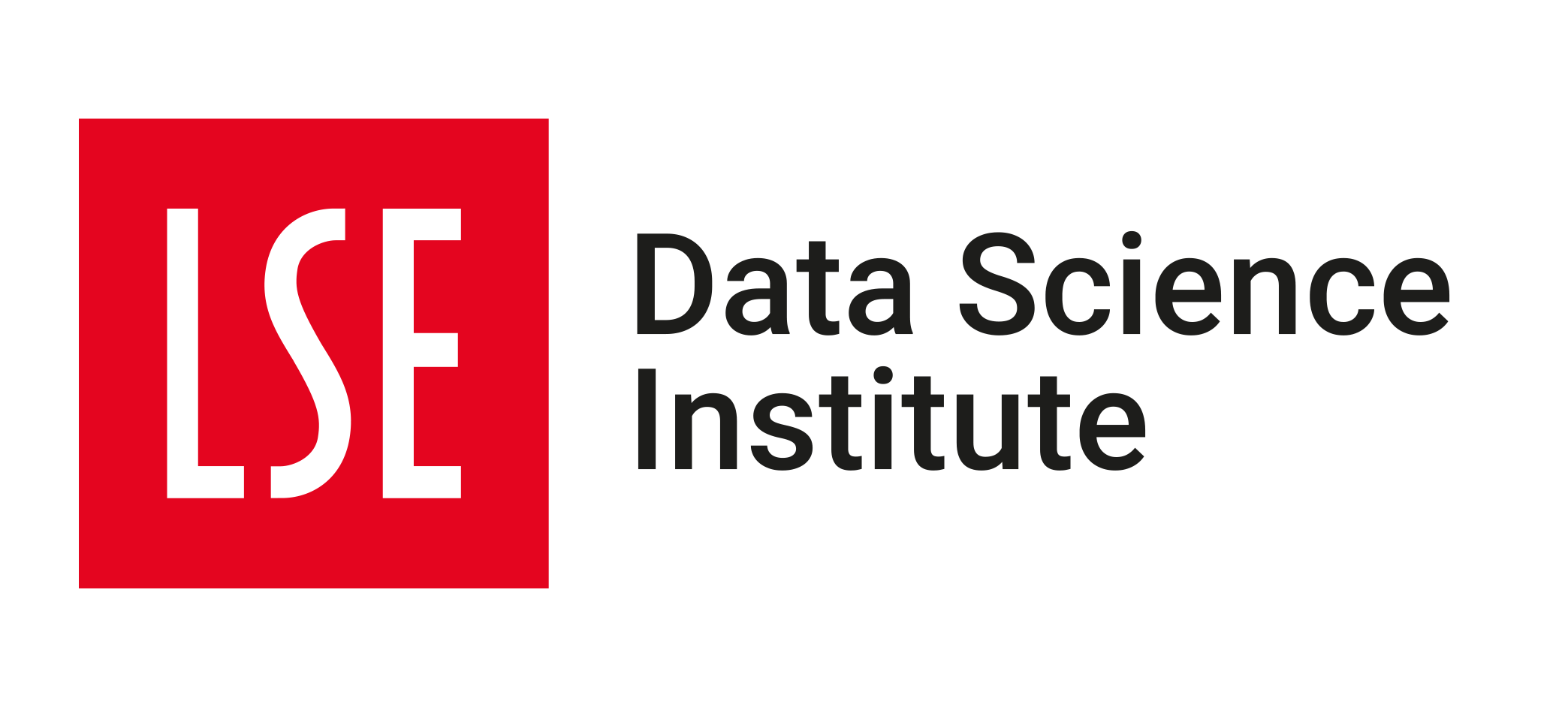🗓️ Week 04
Statistical Inference I
DS101 – Fundamentals of Data Science
06 Feb 2023
The Data Science Workflow
- Statistics belongs more closely to this stage of the data science workflow.
- We will learn how to use statistics to make inferences about the world from data.
Statistical Inference I & II
What we will see this week and the next:
🗓️ Week 04
- Samples, Population & Resampling
- Exploratory Data Analysis
- Correlation vs Causation
- What is Probability?
- Probability Distributions
🗓️ Week 05
- Hypothesis Testing
- Framing Research Questions
- Randomised Controlled Trials
- A/B Tests
- What about Cause and Effect?
Population vs Sample
Population
- The population is the set of all elements that we are interested in.
- It could be any set of objects or units (not just people):
- all the possible meaningful sentences one can conceive of in a language
- all the stars in the universe
- The size of the population is often referred to as \(N\) (uppercase)
Sample
- A sample is a subset of the population of size \(n\)
- We examine the sample observations to draw conclusions and make inferences about the population.
- Samples are always limited by what we can measure.
How you take the sample matters
- The sample you take will influence the conclusions you draw.
- Suppose you want to study patterns of e-mail use in a company.
- You could take:
1️⃣ a random sample of 10% of people then look at their e-mails on a given day.
2️⃣ a random sample of 10% of all emails sent on a given day
✍️ A quick exercise:
- We will split the class into 2 groups.
- Open RStudio and create an R notebook
DS101L_2022_23_Week_04.Rmd - Now write down the pros and cons of your allocated sample
- 🗣️ Let’s discuss
In the age of Big Data
why don’t we just sample \(N=\text{ALL}\)?
- Sampling solves some engineering problems
- Bias: we can’t generalise much beyond the population
- Data is not objective!


References: (Guyan 2022) & (D’Ignazio and Klein 2020)
Inference
Statistical Inference
“This overall process of going from the world to the data, and then from the data back to the world, is the field of statistical inference.”
Statistical Inference
“More precisely, statistical inference is the discipline that concerns itself with the development of procedures, methods, and theorems that allow us to extract meaning and information from data that has been generated by stochastic processes1.”
Exploratory Data Analysis (EDA)
Start with an Exploratory Data Analysis
- EDA is fundamentally a creative process.
- Like most creative processes, the key to asking quality questions is to generate a large number of questions.
- 💡 It is difficult to ask revealing questions at the start of your analysis because you do not know what insights are contained in your dataset.
Source: (Schutt and O’Neil 2013, chap. 2)
Steps of an EDA
- Generate questions about your data.
- Search for answers by visualising, transforming, and modelling your data.
- Use what you learn to refine your questions and/or generate new questions.
What do you want to show?

What do you want to show?

What values can my variable take?
library(ggplot2)
data(diamonds)
g <- (ggplot(data=diamonds) + geom_bar(mapping=aes(x=cut, fill=cut)) +
scale_fill_discrete(guide=NULL) +
theme_bw() + theme(axis.text=element_text(size=rel(1.15)), axis.title=element_text(size=rel(1.4))) +
labs(title="Diamond cut", x="Cut", y="Count")
)
g
How are the variables co-related?
library(ggplot2)
data(faithful)
g <- (ggplot(data=faithful) +
geom_point(mapping=aes(x=eruptions, y=waiting), color="#5C5AD3", size=4, alpha=0.5) +
theme_bw() +
theme(axis.text=element_text(size=rel(1.15)), axis.title=element_text(size=rel(1.4))) +
labs(title="Old Faithful geyser in Yellowstone National Park, Wyoming, USA.", x="Eruptions (in mins)", y="Waiting Time (in mins)")
)
g 
Some ways to summarise association
Numerical data
Pearson correlation coefficient:
\[ \rho = \frac{\sum_{i=1}^{n}{(x_i - \bar{x})(y_i - \bar{y})}}{\sqrt{\sum_{i=1}^{n}{(x_i - \bar{x})^2\sum_{i=1}^{n}{(y_i - \bar{y})^2}}}} \]
- The above assumes variables are linearly related
- Values range from -1 to +1
Discrete data
Contingency table (cross-tabulation):
| Variable 1 / Variable 2 |
Category A | Category B | Category C |
|---|---|---|---|
| Category A | 10 | 20 | 30 |
| Category B | 40 | 50 | 60 |
| Category C | 70 | 80 | 90 |
| Category D | 0 | 10 | 40 |
✍️ Activity
🧮 Let’s calculate like in the old ages!
- Form two groups again
- Create a new header in your notebook
- Calculate the correlation coefficient for the
faithfuldataset:- Group 1: Use only samples with \(\operatorname{eruption} < 3\) minutes
- Group 2: Use only samples with \(\operatorname{eruption} \ge 3\) minutes
- Format your results using markdown
- 🗣️ Let’s discuss
You probably already heard this before, but it bears remembering the mantra:
“correlation does not imply causation”

Photo by cottonbro studio | Pexels
Spurious Correlations
Check more on the Spurious Correlations website
Spurious Correlations
Check more on the Spurious Correlations website
Time for coffee ☕

After the break:
- Interpretations of probability
- Probability distributions
- Next week’s summative assessment
What is Probability?
What is Probability?
Let’s talk about three possible interpretations of probability:
Classical
Frequentist
Bayesian
Events of the same kind can be reduced to a certain number of equally possible cases.
Example: coin tosses lead to either heads or tails \(1/2\) of the time ( \(50\%/50\%\))
What would be the outcome if I repeat the process many times?
Example: if I toss a coin \(1,000,000\) times, I expect \(\approx 50\%\) heads and \(\approx 50\%\) tails outcome.
What is your judgement of the likelihood of the outcome? Based on previous information.
Example: if I know that this coin has symmetric weight, I expect a \(50\%/50\%\) outcome.
What is Probability?
For our purposes:
- Probabilities are numbers between 0 and 1
- The sum of all possible outcomes of an event must sum to 1.
- It is useful to think of things as probabilities
Note
💡 Although there is no such thing as “a probability of \(120\%\)” or “a probability of \(-23\%\)”, you could still use this language to refer to an increase or decrease in an outcome.

Distributions
Histograms
Click to see the code
library(ggplot2)
data(faithful)
g <- (ggplot(data = faithful) +
geom_histogram(mapping = aes(x=eruptions), binwidth = 1.0, fill="#5C5AD3") +
scale_x_continuous("Eruptions (in mins)", breaks = seq(0, 6, 1), limits=c(0, 6)) +
scale_y_continuous("Density", breaks = seq(0, 120, 10), limits=c(0, 120)) +
theme_bw() + theme(axis.text=element_text(size=rel(1.2)), title=element_text(size=rel(2))) +
labs(title="Histogram with binwidth = 1.0") +
geom_hline(yintercept = 110.0, color = "red", linetype = "dashed", size = 1.0)
)
g
Histograms | What happens if we bin it differently?
Click to see the code
library(ggplot2)
data(faithful)
g <- (ggplot(data = faithful) +
geom_histogram(mapping = aes(x=eruptions), binwidth = 0.5, fill="#5C5AD3") +
scale_x_continuous("Eruptions (in mins)", breaks = seq(0, 6, 1), limits=c(0, 6)) +
scale_y_continuous("Density", breaks = seq(0, 120, 10), limits=c(0, 120)) +
theme_bw() +
theme(axis.text=element_text(size=rel(1.2)), title=element_text(size=rel(2))) +
labs(title="Histogram with binwidth = 0.5") +
geom_hline(yintercept = 80.0, color = "#ff0000", linetype = "dashed", size = 1.0) +
geom_hline(yintercept = 110.0, color = "#ffb2b2", linetype = "dashed", size = 1.0)
)
g
Histograms | What happens if we bin it differently?
Click to see the code
library(ggplot2)
data(faithful)
g <- (ggplot(data = faithful) +
geom_histogram(mapping = aes(x=eruptions), binwidth = 0.1, fill="#5C5AD3") +
scale_x_continuous("Eruptions (in mins)", breaks = seq(0, 6, 1), limits=c(0, 6)) +
scale_y_continuous("Density", breaks = seq(0, 120, 10), limits=c(0, 120)) +
theme_bw() +
theme(axis.text=element_text(size=rel(1.2)), title=element_text(size=rel(2))) +
labs(title="Histogram with binwidth = 0.1") +
geom_hline(yintercept = 20.0, color = "#ff0000", linetype = "dashed", size = 1.0) +
geom_hline(yintercept = 80.0, color = "#ffb2b2", linetype = "dashed", size = 1.0) +
geom_hline(yintercept = 110.0, color = "#ffb2b2", linetype = "dashed", size = 1.0)
)
g
Let’s zoom in ➡️
Zoom in 🔎
Click to see the code
library(ggplot2)
data(faithful)
g <- (ggplot(data = faithful) +
geom_histogram(mapping = aes(x=eruptions), binwidth = 0.1, fill="#5C5AD3") +
scale_x_continuous("Eruptions (in mins)", breaks = seq(1, 6, 1), limits=c(1.5, 5.25)) +
scale_y_continuous("Density", breaks = seq(0, 20, 4), limits=c(0, 20)) +
theme_bw() +
theme(axis.text=element_text(size=rel(1.2)), title=element_text(size=rel(1.7))) +
geom_vline(xintercept = 3.0, color = "#ff0000", linetype = "dashed", size = 1.0) +
labs(title="Histogram with binwidth = 0.1",
subtitle="The two patterns in the data become more apparent when we bin it this way."))
g
Probability Distributions
- the probability distribution of a random variable is a function that gives the probabilities of occurrence of different possible outcomes for that variable.
- think of it as an attempt to model the data
- you hope that the model will be a good representation of the population
Note
- the word model has a very precise meaning here
- we will come back to models next week
Some Very Common Probability Distributions
Normal Distribution
Statistical Function:
\[ f(x) = \frac{1}{\sqrt{2\pi\sigma^2}}e^{-\frac{(x-\mu)^2}{2\sigma^2}} \]

Poisson Distribution
Statistical Function:
\[ f(x) = \frac{\lambda^xe^{-\lambda}}{x!} \]

What’s Next
Your Week 05 Presentation
Groups:
Each group will focus on a different plot type, as illustrated in R Graph Gallery:
Group A: Plots of distributionsGroup B: Plots of correlationsGroup C: Plots of rankingsGroup D: Plots of evolutionGroup E: Plots of flow
🎯 Your task:
- Prepare a presentation of 12-15 minutes for each group.
- Search for 3 interesting examples of plots that belong to your group.
- Plots must come from:
- published papers, reports
- or from yourself!
- ⚠️ DO NOT use the same plots that are in the R Graph Gallery
- 💡Use Slack to share your tips on how to find good references!
References

LSE DS101 2022/23 Lent Term (archive)